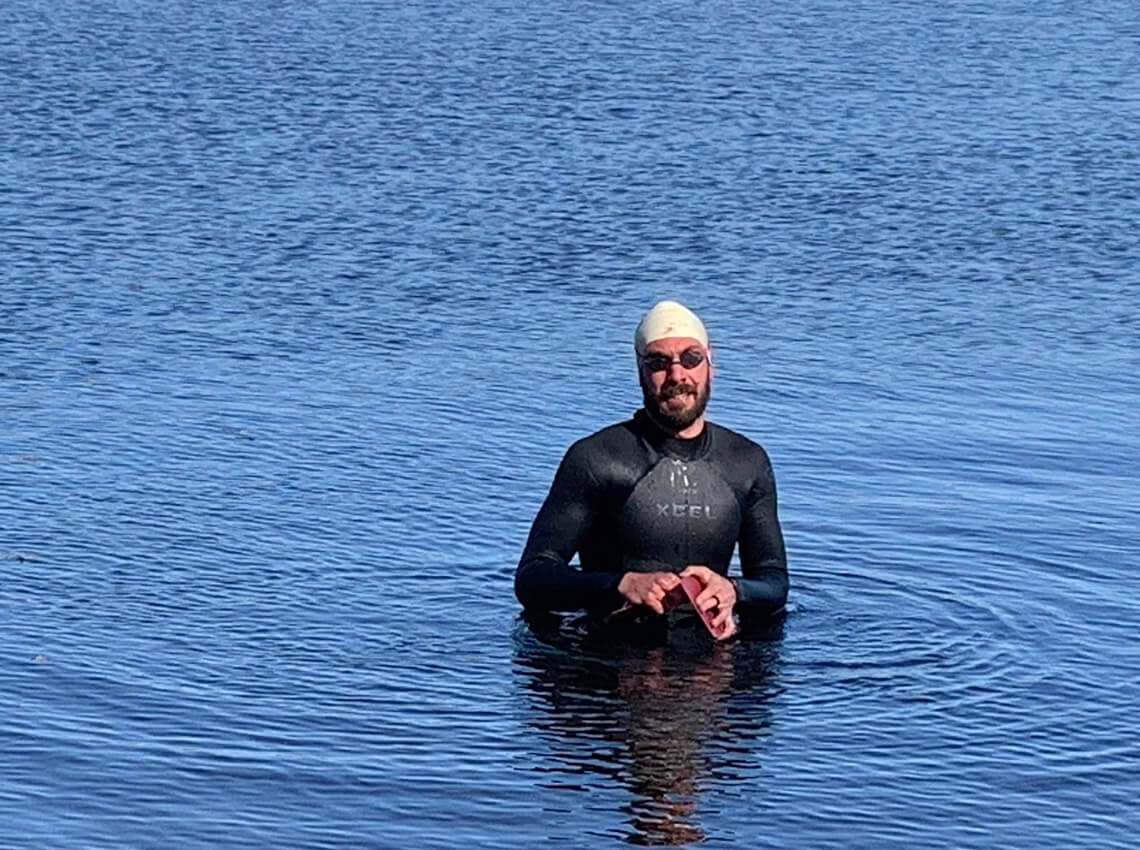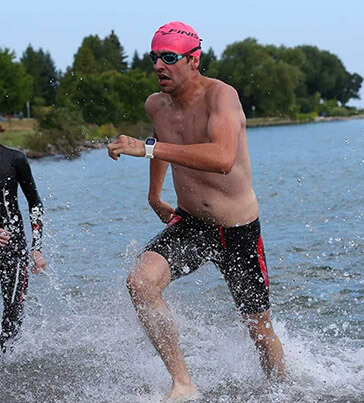Team Athletes adjust their swim training during the Pandemic
During this pandemic, swim training is especially difficult for athletes around the world.This spring, some of out team and youth athletes have taken to open water in lakes, quarries, and canals to get their swim practises in, first with wetsuits in May, and now it is a bit warmer, without wetsuits whilst they await for pools to open again.
Here is some advise from Team Athletes Robert Bonomo , Christopher Rudolph and Youth Athlete Sabrina Staveley who all suited up in wetsuits starting in May, as well as some pictures of open water experiences in 2020 and 2019 .
Team Athlete Robert Bonomo, Quebec:
“Given that I have had open water swimming as a part of my summer training program for many years, adapting to it did not take me much time. I would say the most difficult factor in my adaptation during this time was preparing for and tolerating the colder water temperatures. When I started swimming in Mid-May the water temperature was around 12 degrees. I remember the first practice I swam I was freezing at the end of my practice and had to hop out early, but within a couple of swims I was able to stay in the water for the full practice time.
For anyone that wants to start open water swimming in colder water, I recommend purchasing a 4mm or 5mm thick wetsuit. Also order a size that fits tight because they loosen after a few swims. If the suit is not tight, too much water will get into your suit and it will not have the proper effect of keeping your body warm. Also, ALWAYS swim with a friend or with a guardian who can monitor you, don’t ever swim out far from the shore line, and swim with a flotation device.”
Team Athlete Christopher Rudolph, Ontario :
“With one of my main swimming coaches specializing in open-water swimming, I’ve dabbled in swimming outdoors over tge years.
Under current events however, open-water has had to become the core of my swimming program this year.
For anyone unfamiliar with open-water, navigation and drafting will present themselves as new challenges.
Sighting is an important tool that will require you to modify your normal stroke pattern and watch your surroundings in order to keep on course and safe.
Working in a group is always preferable when it comes to training, and more so when it comes to keeping safe in open-water. It also presents an opportunity in drafting, which helps to bridge skill gaps in groups as well as offering opportunities for various drills.
For anyone looking to pick up open-water swimming this summer, I suggest you try to find a (small) group and coach to work with as well as a suitable location. Established open-water communities may have courses setup, that make structuring your workouts easier and more effective. Local triathlon communities are generally the most well-established open-water resources to find an open-water setup that works for you.
While adapting to open-water and this changing world we find ourself in may be daunting, remember this great scene from Finding Nemo – https://youtu.be/0Hkn-LSh7es”
Youth Athlete Sabrina Staveley, Ontario:
“Open water swimming forces you to have more body awareness for swimming in a straight line without the help of lane ropes. It also helps you become more adaptable when conditions are unpredictable.”
Pictures: Robert Bonomo, Christopher Rudolph.


 creation
creation